Gloves are a fantastic men’s accessory in terms of both practicality and aesthetics–so it’s best to find a pair that serves you well on both fronts! Today, we’ll discuss everything you need to know about gloves so that you can confidently choose a quality pair (or several!) that provide good value for you and work within your wardrobe.
In my mind, gloves are an exceptional accessory because they emphasize two aspects: form and function. First of all, practically, you need gloves that keep your hands warm and protected. I grew up in Germany and I live in Minnesota. So, trust me. I know what cold winters are like!
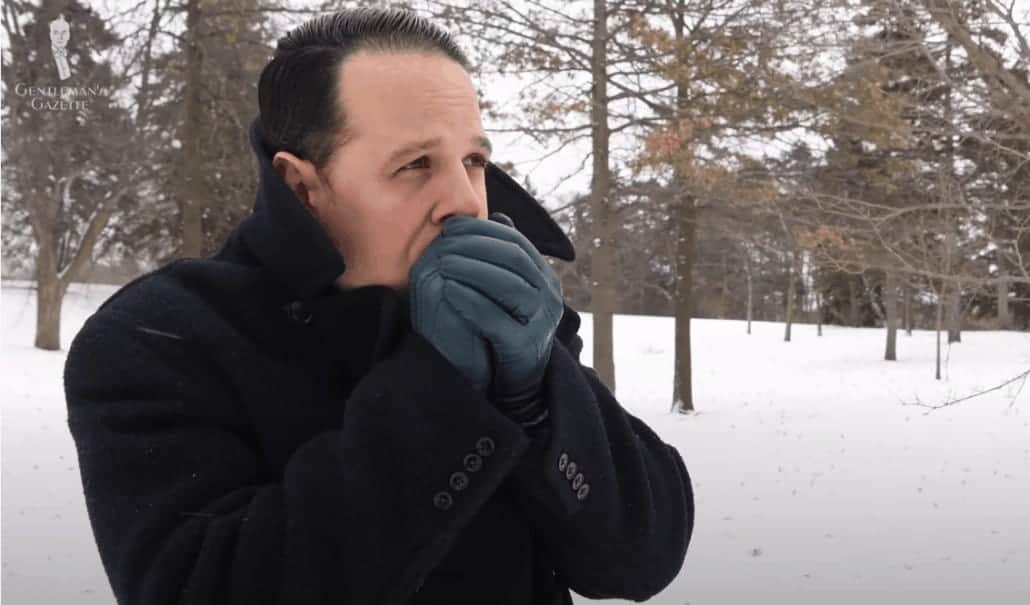
Likewise, you want gloves that don’t just look elegant but are also comfortable and flexible. And, last but not least, they have to fit like a glove. There are dress gloves, which can be unlined, lined, and you can have specialty gloves, such as driving gloves or golf clubs.
Some would assume that all gloves are more or less made the same, and therefore, they don’t have to spend much. Well, they couldn’t be further from the truth. Before we dive into the different leather, the exact fit, and all the little details, let’s take a look at the history of gloves.
History of Gloves
Archaeological evidence suggests that humans have worn gloves for 45,000 years. Big surprise: their development coincides with the major Ice Ages. Gloves with individual fingers may have existed as early as 18,000 BC.
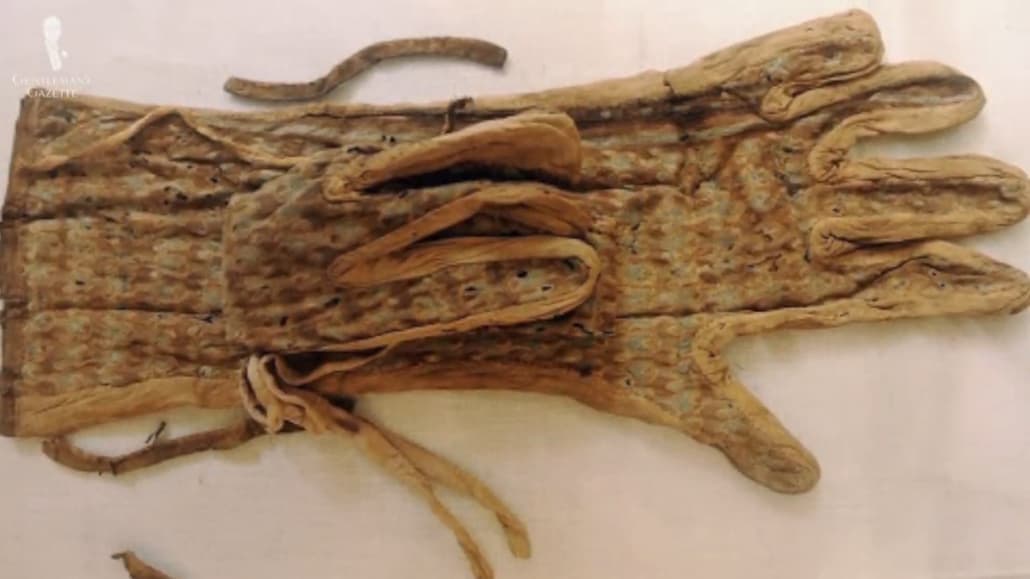
The oldest gloves we have today were found in the tomb of King Tutankhamun and they date to about 1323 BC. Of course, gloves are worn for utilitarian purposes; to keep the hands clean and warm, and of course, protect them, like the chainmail gloves depicted in a 13th Century manuscript.
It wasn’t until the early modern period, where gloves moved from a purely utilitarian item to a status symbol. Just look at these gorgeous leather gloves and all the detailing, and those belonged to King Charles I of England. Yes, you’re seeing that right. There’s lace and decorative silk thread on those pairs of men’s gloves.
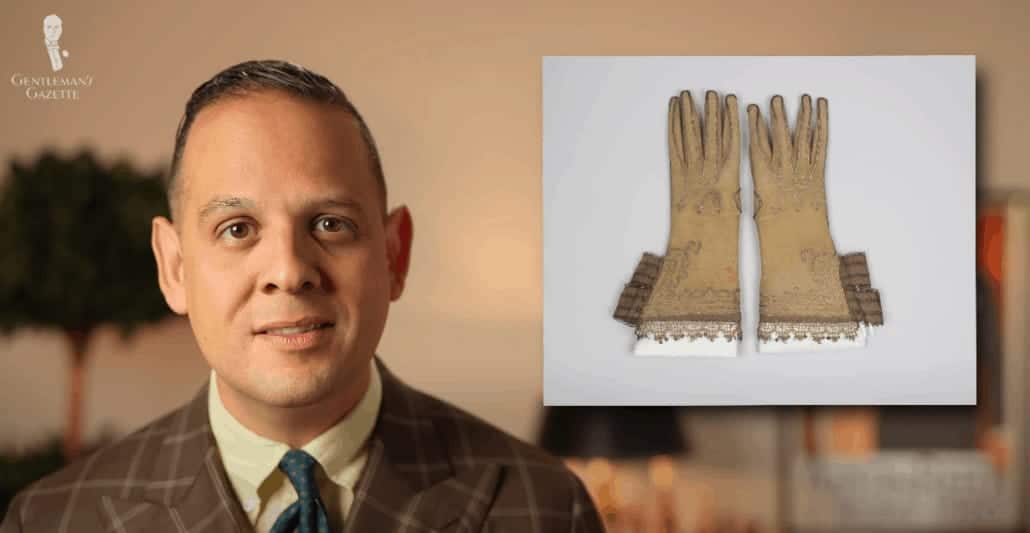
As a king, you could afford to just have gloves for decorative purposes. Others would still use them for riding or hunting or shooting.
As the modern suit evolved, gloves became more standardized and formalized, with all the pomp and rigor I would expect from Victorian fashions.
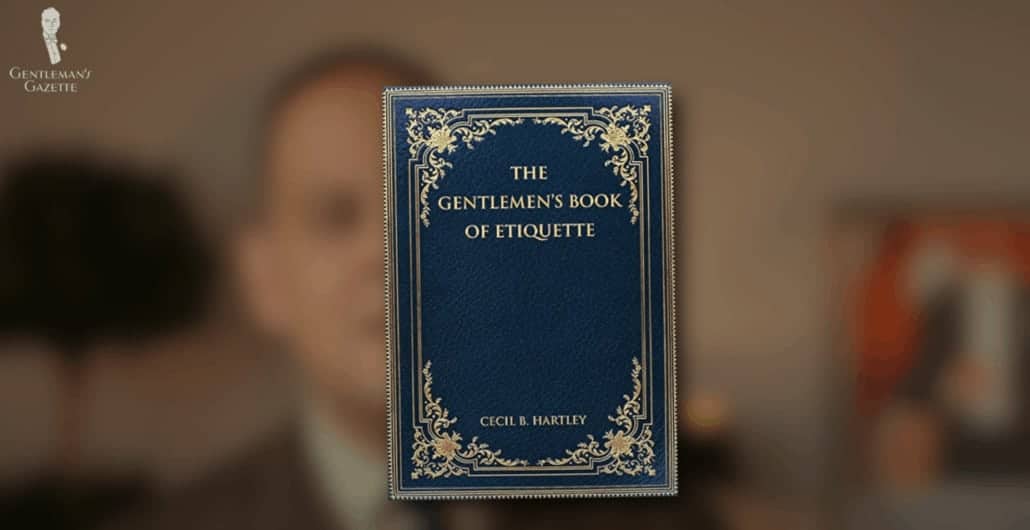
The commentator Cecil B. Hartley tells us, somewhat sarcastically, this little poem about gloves.
“To be in fashion, an Englishman must wear six gloves a day. In the morning. he must drive his hunting wagon in reindeer gloves. In hunting, he must wear gloves of chamois skin. To enter London, in his tilbury beaver skin gloves. Later in the day, to promenade in Hyde Park, colored kid gloves, dark. When he dines out, colored kid gloves, light. For the ballroom, white kid gloves.”
Obviously, by the 20th Century, these rules had relaxed even for gentlemen. That being said, an English gentleman would have still been expected to wear regular day gloves as part of the outerwear ensemble, and evening gloves for White Tie. Even in the 1920s US, evening gloves for men were still something that could be seen.
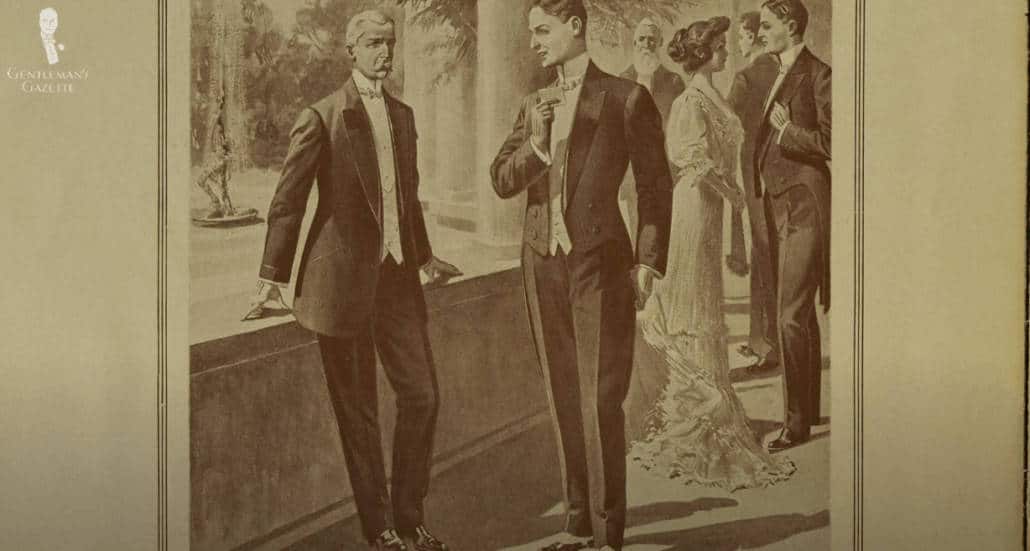
Likewise, the “Motor-Mania” in the early 20th century made a lot of gentlemen exchange their riding gloves for driving gloves, along with their helmet or cap and goggles. So, even now, as cars became all the rage, gloves could be regularly seen on gentlemen of style.
As the 20th Century progressed, the interest in gloves started to wane. In a nutshell, you could say that the same forces that led to the decline in quality in menswear, men’s leather gloves declined the same way, in terms of quality and just general interest of the public.
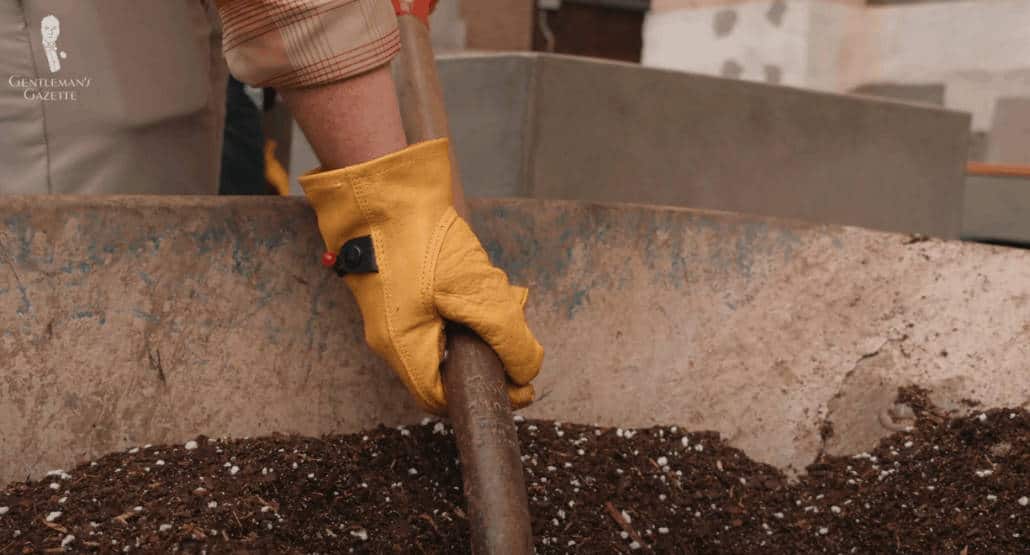
Nowadays, many men think of gloves as mainly utilitarian, that they use when they go outside and it’s cold or they have to shovel snow. Men’s leather dress gloves can be so much more than that and today, we’ll discuss why and how.
Functionality of Gloves

The first step in choosing the right gloves is by determining what you’ll be using them for. As mentioned earlier, you can have the regular everyday winter gloves, you can have driving gloves or evening gloves.
Everyday & Winter Gloves
If the purpose of your gloves was just to keep warm, you could just wear a thick pair of, maybe, skiing gloves. The problem is they’re full of nylon, you can’t really move your fingers very easily, and it’s difficult to, let’s say, type on the phone or grab your wallet out of your pocket.
Dress gloves, on the other hand, are meant to enhance your outfit while still keeping your fingers warm. In general, poorer quality dress gloves are made of stiffer leathers that are just less comfortable to wear. They may also have a polyester-based fleece lining, which is warm but the seams are bulky and it just doesn’t look good.
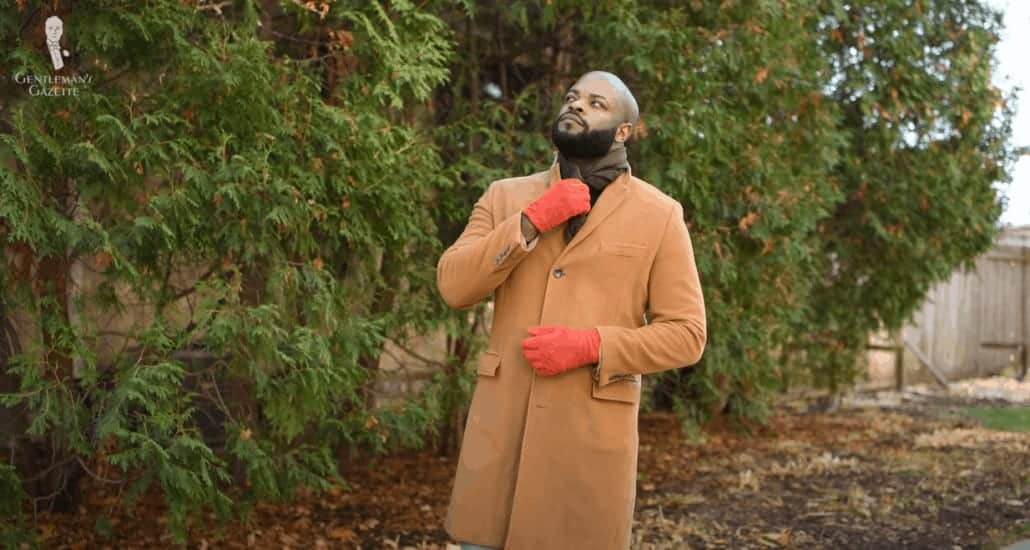
If you’re curious how a pair of $30 gloves stack up compared to a pair of $300 pair of gloves, we’ve done a head-to-head comparison on another post. If you’ve already got a pair, you can consult our guide on how you can combine your gloves with your overcoat, scarf, and outfits.
Evening Gloves
When it comes to evening gloves, the whole purpose is not to insulate. It’s all about the looks and the elegance of the ensemble. Because of that, you either want an unlined pair of gloves or, maybe, a silk-lined pair, so you can take them on easily but it doesn’t add bulk to the whole look.
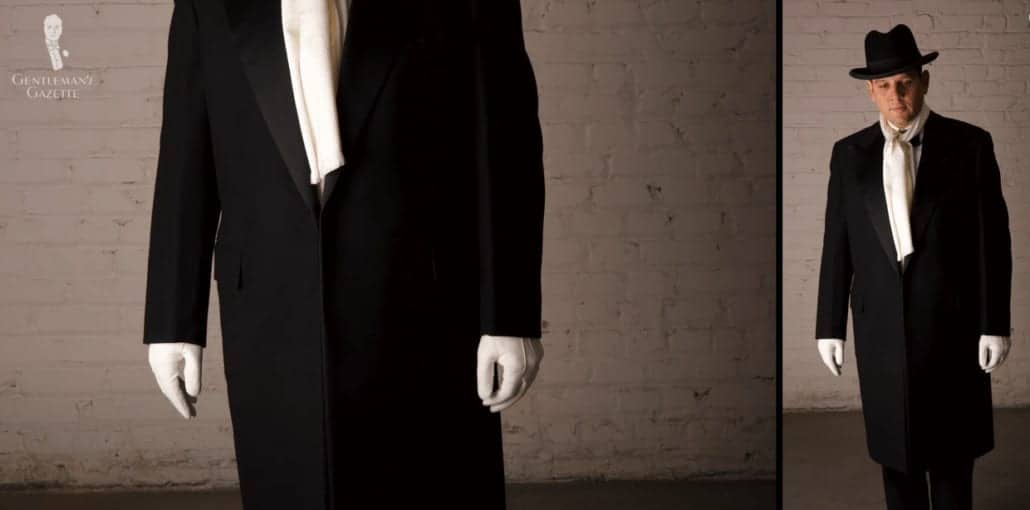
You want them to fit very tightly, so it just looks really debonair. I think they’re really appropriate for White Tie occasions. They can also be worn for Black Tie but they’re not necessary, per se. That being said, compared to someone who just shows up in their tux and their overcoat with regular gloves, you will look so much better.
If you look up videos of the Vienna Opera Ball, you will see that men also wear those gloves inside while they dance. Why? Well, not because they’re cold, but because it gives you that elegant, more formal look.

For Black Tie, on the other hand, you’re better served to take out the gloves once you walk in. Otherwise, it may look a bit pretentious. Again, make sure that the fit is really tight, that you choose a very flexible leather such as a lamb Nappa, and that, decoratively, there are not many seams, it’s all very classic and neat.
You also don’t want any visible seams but you want the glove to be sewn inside out so your fingers just look very streamlined and elegant.
Driving Gloves
When it comes to driving gloves, there was a time when they were really necessary. In this day and age, they are not really necessary but they provide a nice elegant look in addition to grip on the steering wheel. It also makes you feel very different when you’re driving a nice car with a pair of driving gloves on.
Driving gloves are for people who want to set themselves apart from the regular commuter. I also think they’re particularly nice with classic automobiles, but you can wear them in a modern Ferrari, no problem.
Glove Materials
In order to get a really great pair of dress gloves, you have to have the right materials, which means you want something that is stretchy, flexible, supple, and soft. Based on that, in this day and age, leather is still king. But, not any leather is suited for perfect gloves.

Bovine Leather
Bovine leathers are those from cows or calves. Calf leathers are really prized for luxurious goods such as shoes or handbags, or other small leather goods. Unfortunately, it is subpar leather for dress gloves as it lacks the stretchiness required to make it feel comfortable when you wear it.
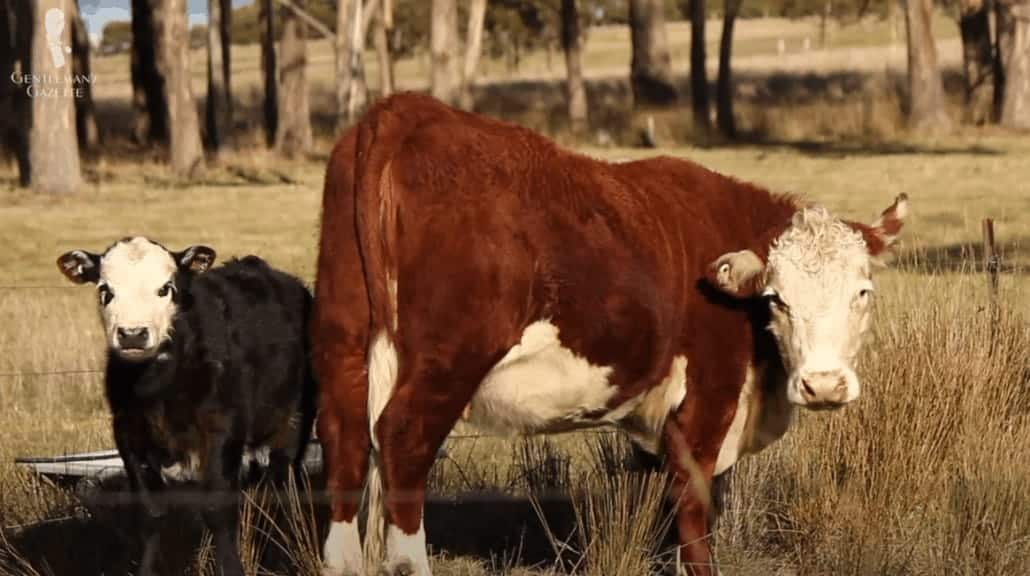
It’s also a bit too thick so it’s not pliable and not flexible. If you have a pair of gloves made out of calf leather or even cowhide, it’s just a pain.
Cervine Leather
The other group of leathers is cervine leathers, which are leathers from animals like elk or deer. Cervine leather is quite flexible and also durable and it has a certain level of softness. So, it’s better suited for gloves than calf leather or cowhide.
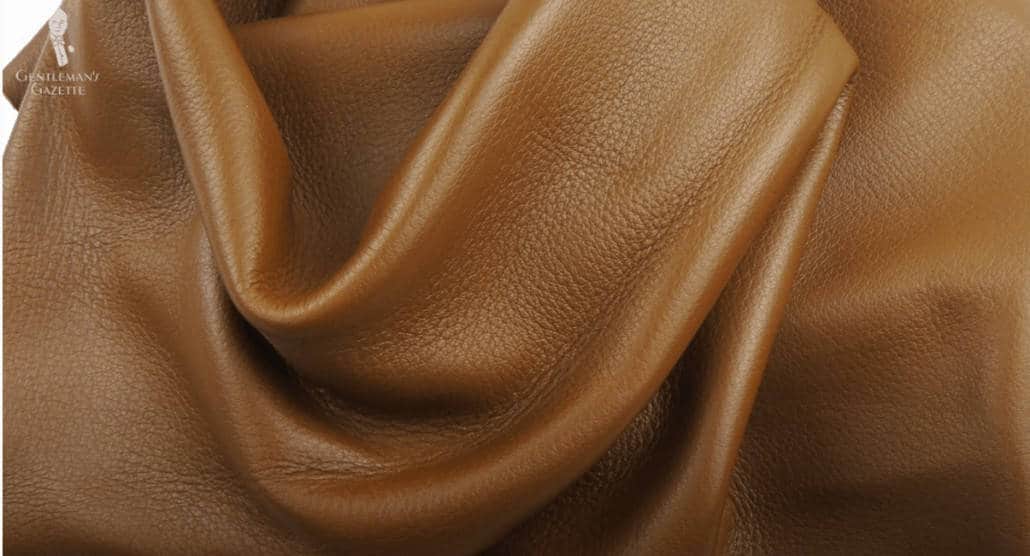
At the same time, it also has a bit more of a rugged appearance so, for super fine evening gloves or fine leather dress gloves, it’s just not as well suited. It has a more casual look. Because of that, you can often see work gloves made out of deerskin but not so many fine men’s dress gloves.
Caprine & Ovine Leather
Let’s talk about caprine and ovine leather, which are from lamb, goat, or sheep.
Goat Leather
Overall, goat leather is a lower quality leather and not so well-suited to glove-making because it’s all rough to the touch. That’s not what you want for gloves.
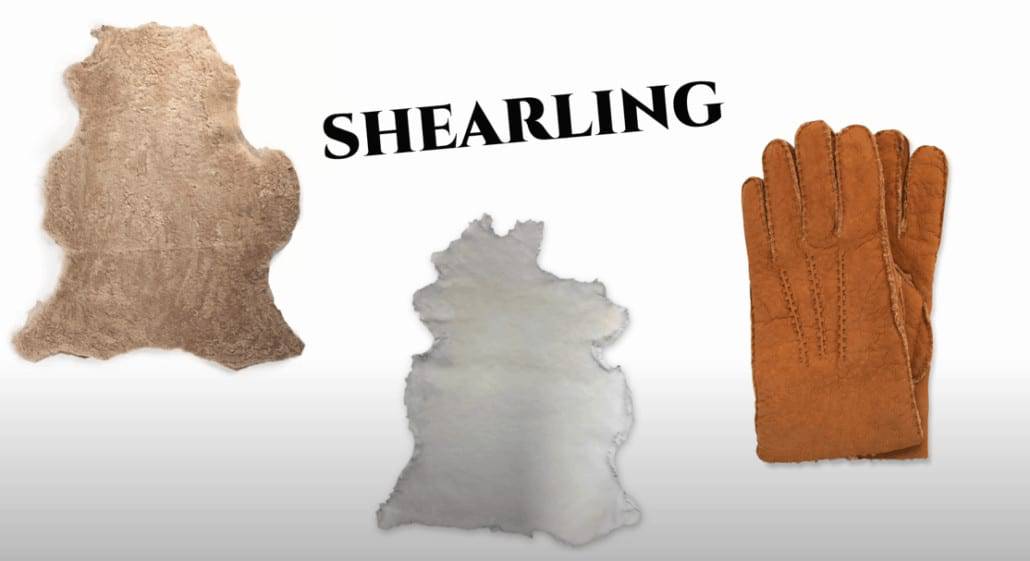
Sheep Leather
Sheep leather, on the other hand, can be used in a variety of ways for gloves. First, you can have shearling leather so you have a suedey outside and a white, kind of furry inside. While they’re quite warm, they’re very bulky and thick and they can be used for casual gloves at best, not for fine dress gloves.
Hair Sheep Leather
Hair sheep leather, on the other hand, is an excellent glove material. It’s soft, supple, thin, yet strong and durable. The English tannery Pittards is tanning their Cabretta leather, which is a hair sheep leather, and it’s used by glove manufacturers like Dents.
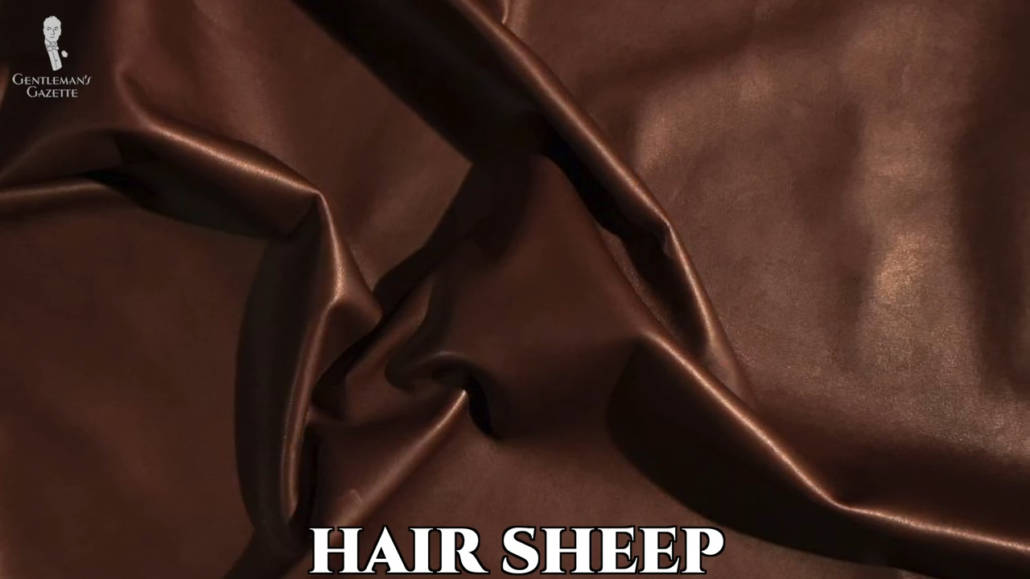
Lamb Nappa Leather
In the same vein, lamb Nappa leather is really nice for gloves, because it’s soft, supple, thin, and great for cloth production because it has a suppleness, it’s stretchy, it really conforms to your hands.

Today, typically, the best raw skins come from Ethiopia or areas around the equator. Of course, that’s just the raw material. Where you tan the skin also has an impact on the final result. Traditional tanning countries like Italy, Germany, France, or England still have the upper hand in my experience when it comes to getting the perfect glove leather results.
Porcine & Peccary Leather
Interestingly, for gloves, porcine leather or leather from anything from a regular pig to javelina can be extremely nice for gloves.
Peccary Leather
The best glove leather known to mankind is peccary leather, which is derived from the javelina. Some say it’s a pig-like animal even though, technically, that could be contested. But, it’s generally found in South America, Middle America, and even in parts of North America.

In a nutshell, peccary leather is unmatched when it comes to softness, especially when you consider the fact that it gets softer as you wear it. It has this unique and refined appearance. It’s definitely more on the casual side.
For being so soft and pliable, and supple, it is extremely durable. I’ve never seen anyone wear out a pair of peccary glove leather. Maybe the seam gives up over time, but the leather itself stands up and they can be re-sewn because it’s such a good product.
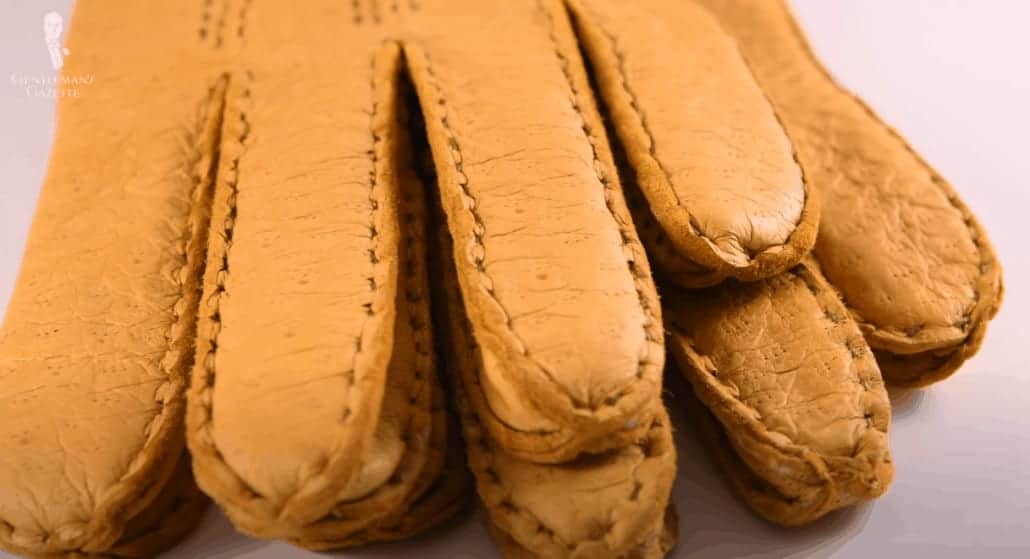
Because it’s derived from wild animals, you will see little marks in leather sometimes and that’s just a hallmark of the true wild nature of the leather. It is also protected by the CITES Convention and so you have to pay a lot more to produce these gloves and make them. But, you also end up with something that is superior to any other glove leather.
Carpincho Leather
In recent years, it seems that a lot of people have gotten the peccary leather and carpincho leather mixed up. Carpincho is leather from the skin of the capybara, a similar pig-like animal.

How can you distinguish carpincho from peccary? For one, peccary has characteristic three follicle pores while carpincho has five to six. Carpincho often looks like a flecked suede. And while it’s a cool casual look, it’s definitely different from a peccary. The finished feel of carpincho leather is often supple and soft, but it’s achieved by sanding it and working it so it gets that particular characteristic.
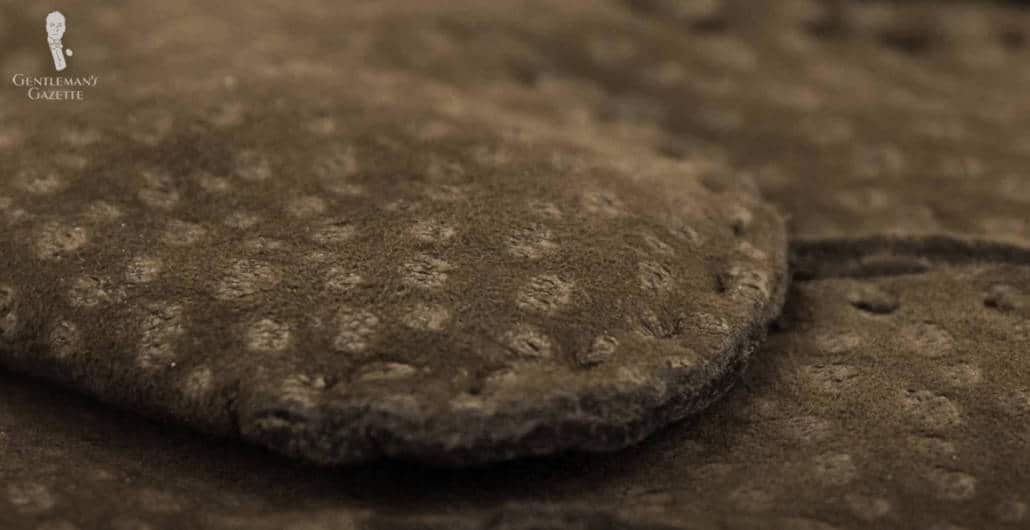
Peccary, on the other hand, when tanned properly, is just soft from the get-go after tanning. While some people prefer the look of carpincho compared to peccary leather, it’s definitely inferior even though it is a good glove leather.
Vegan Leathers
When it comes to vegan leathers, there really is no vegan leather on the market that would compare to lamb Nappa or peccary in terms of flexibility, softness, suppleness, and durability. So, if you’re into vegan stuff, you’ll have a hard time finding something good.
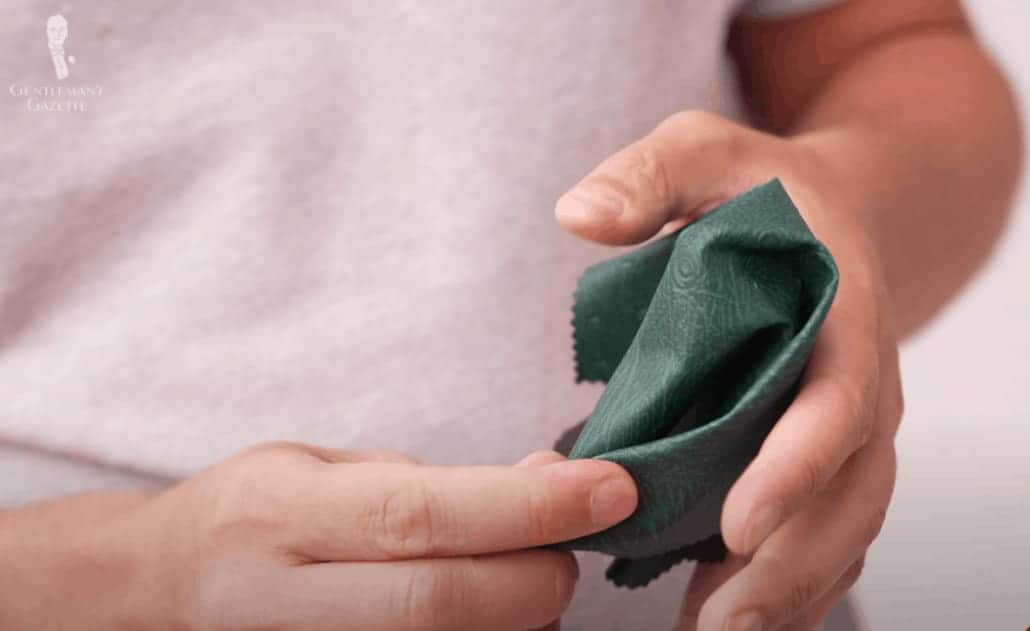
Exotic Leathers
Sometimes, you might also have seen exotic leather gloves. And while it’s typically done to show a certain uniqueness or just that you’re rich as a status symbol, a pair of alligator gloves is typically just with alligator leather on the top part of the hand because, even though it’s durable, it’s not supple and it’s not as flexible.
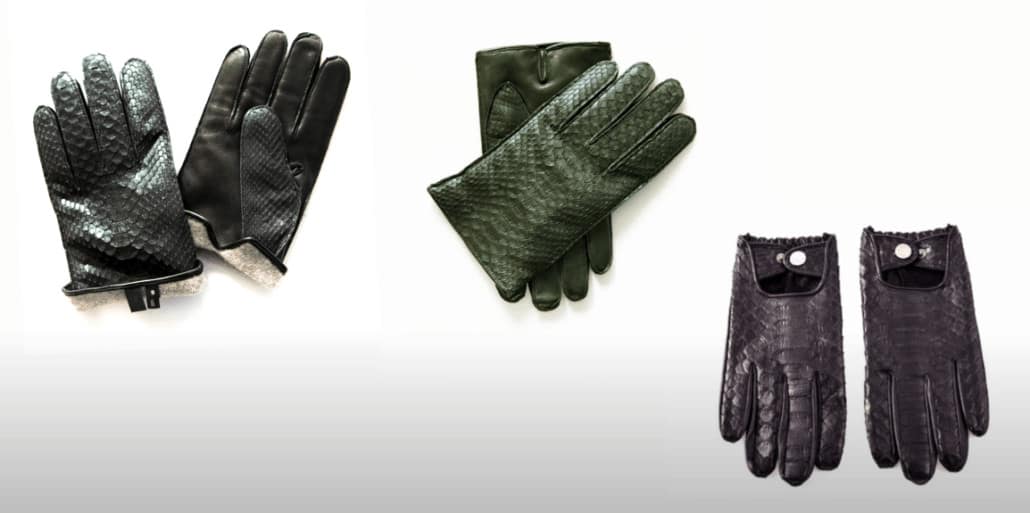
The same is true for ostrich, elephant, snake, crocodile, and so forth. So, in my mind, I suggest staying clear of the exotic skins for gloves unless you want a particular look because the characteristics are just not suited for gloves.
Picking the Right Glove
1. Production
When it comes to leather, the tanning and finishing, and polishing process can have hugely varying impacts on the final product. For example, when I originally searched for peccary, I checked sources from Peru, which is where most peccary skins these days come from.
There were tanners there who could tan it but the problem was the consistency. Some skin was really soft, the other wasn’t soft. One skin had this color, another one that color.

When I took the same peccary skin and brought it to a tannery in Germany, he was able to consistently get that same nice color and it was always buttery soft, much more so than the one from the Peruvian tannery. The tanners we work with specialize in this kind of leather and they get the perfect result.
We also have the right thickness, we have special colors, and we get exactly what we want every time.

So, you have a pair of gloves that look like in the pictures. Curious about how tanning works? You can consult our separate post on the difference between chrome-tanned vs. veg-tanned leather.
2. Construction
In terms of construction, there are slight differences when it comes to men’s leather dress gloves. First, up the job of the cutter is really important because you can make sure that the leather stretches in the right direction for the part of the glove that he’s cutting or that she’s cutting and they can also make sure that they cut around potential defects so you get the best looking glove that’s also flexible in the right direction.
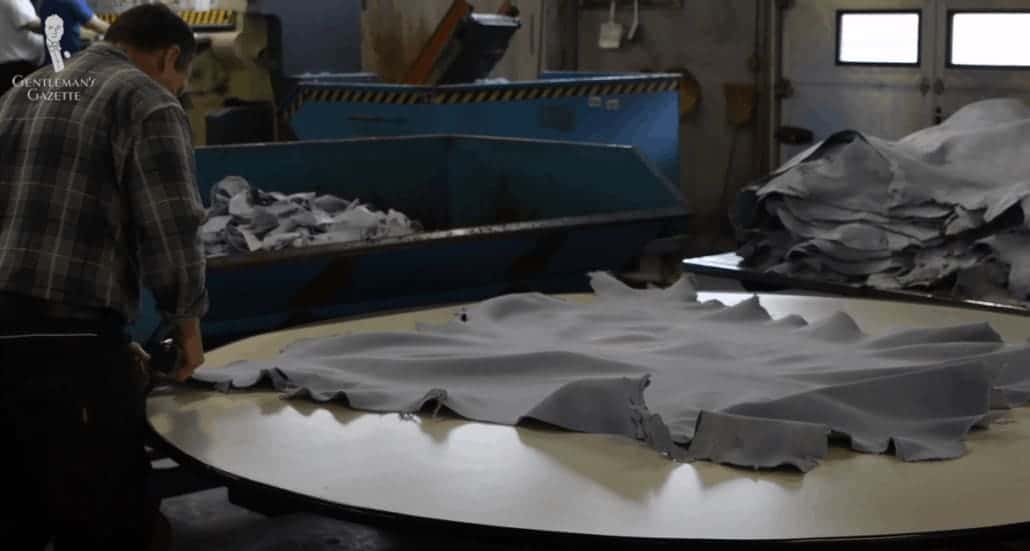
Afterwards, gloves can be sewn by hand or by machine, they can be sewn the regular way so you see exposed edges or they can be sewn inside out so you don’t see exposed edges.
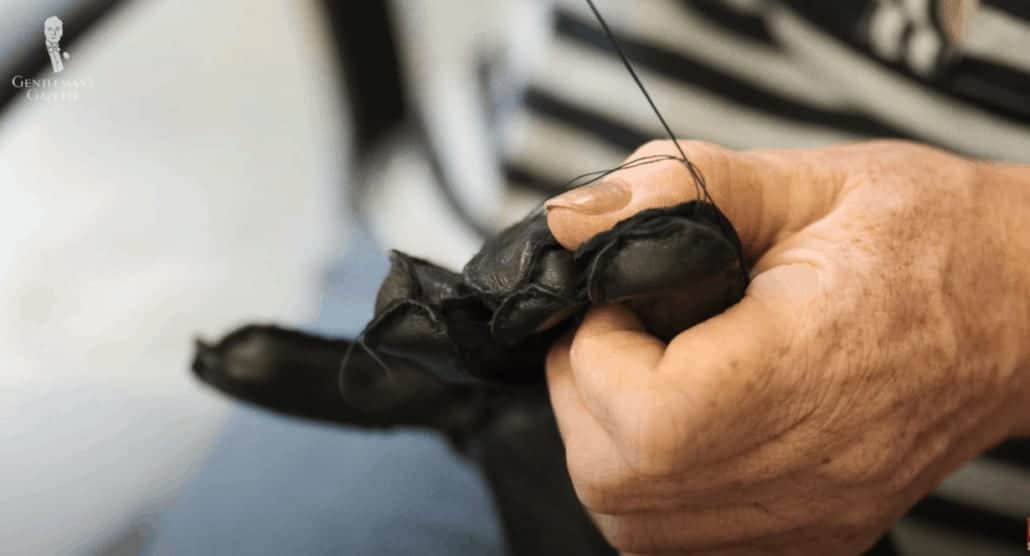
To know how our high-quality menswear gloves at Fort Belvedere are made, our guide on our website has you covered. We always pride ourselves on paying particular attention to details. For example, all of our gloves have a button closure, which was something we would have found in the 1930s.

Just creates a nice look on your wrist and it’s something that we wanted to preserve. Likewise, we’re adding little quirks, little triangles in between the fingers so you have a wonderful range of movement with your fingers.
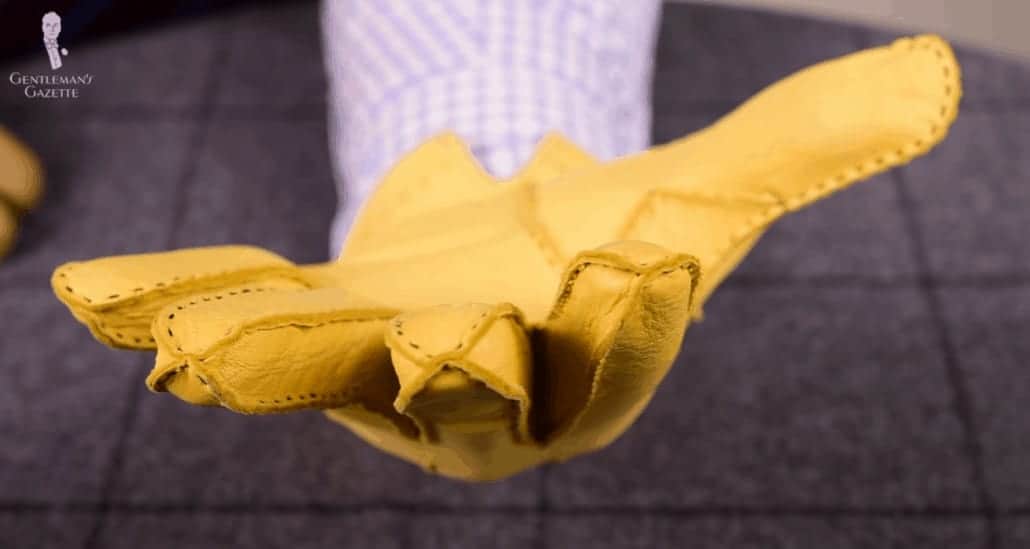
Of course, you can also use different threads, and you want to use the right kind for gloves; something that is not too stiff and flexible, but also not something that comes apart very easily.
3. Size
Obviously, men have different hands. Some have longer fingers, others have shorter fingers, and finding that right balance is key. While most men’s gloves are sold in small, medium, and large or sometimes small-medium as one size and large-extra large is another, at Fort Belvedere, we have a range of different sizes, which are designed with a wearer in mind.
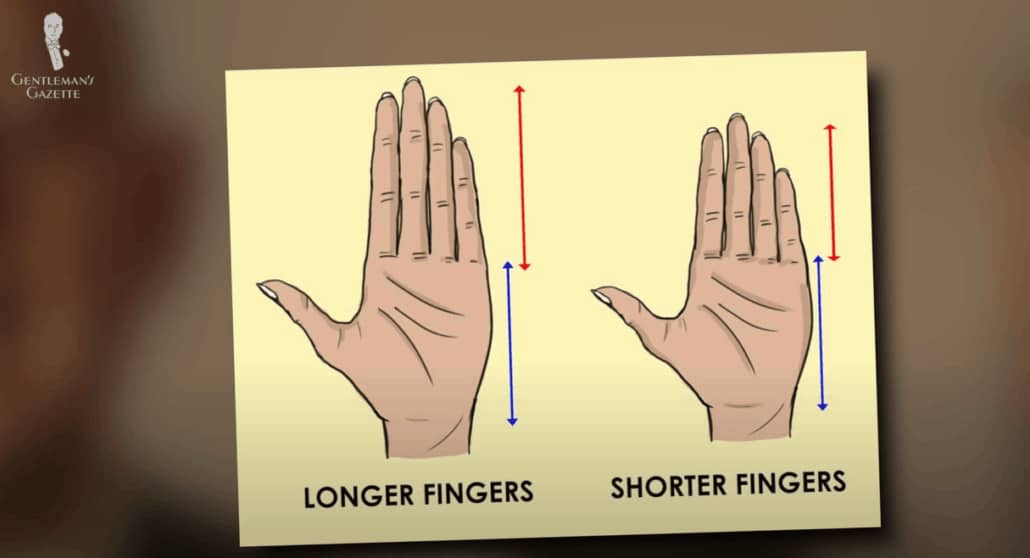
So, the smaller gloves have proportionately a different finger length than the larger gloves just so they really fit you. To learn the right glove size for your hand, our guide in our shop is definitely helpful.
4. Lining
Unlined
While most men these days don’t own a pair of unlined gloves, I can only highly recommend them. Even when you live in a climate where you have really cold winters, they’re perfect in transitional seasons when you maybe wear a trench coat. If you live in warmer areas where the winter isn’t really cold, having a pair of unlined gloves is all you’ll ever need.

Lined: Fleece
If you choose a lining, you can go with shearling, but it’s quite bulky. Fleece is usually found in cheaper gloves. It’s like an artificial material and it’s quite warm but you’re also more prone to sweat in it and I don’t like it for gloves. It feels too bulky.
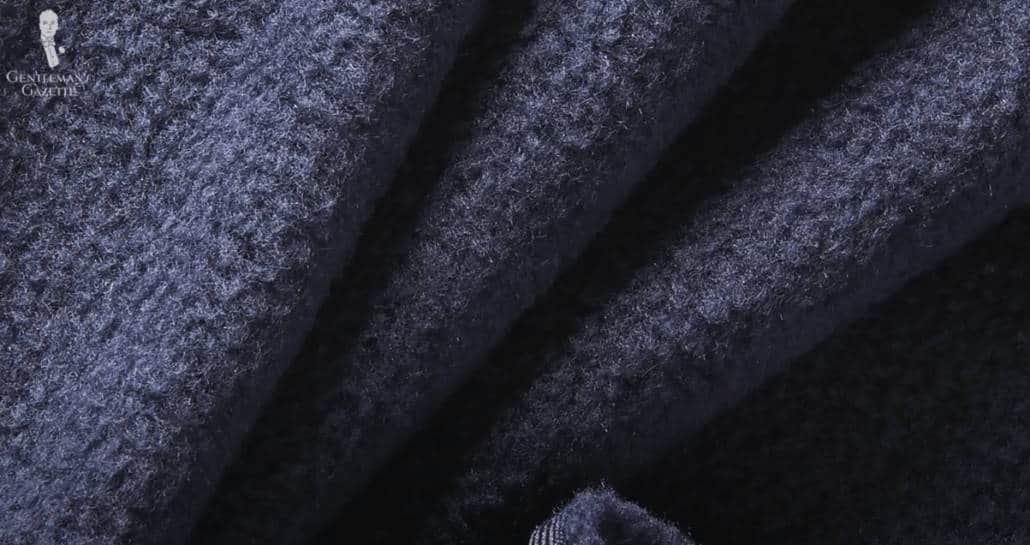
Wool
Wool is a typically affordable lining. It’s animal hair that insulates reasonably well.
Cashmere
Cashmere is a step up from that. It is softer, insulates slightly better, and it’s just more popular for higher-end dress cloth linings.
Alpaca
Alpaca is also a great fiber. It’s not quite as soft as cashmere but it has better insulating properties because the hair itself is hollow, thus insulating better than cashmere.
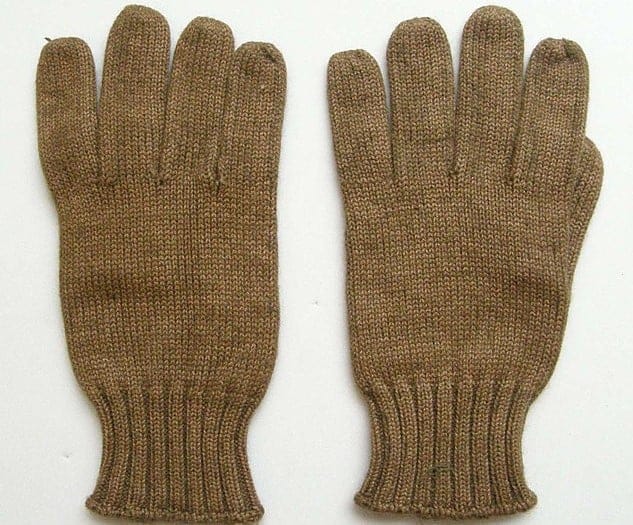
5. Color
Another important aspect to consider when buying a pair of men’s dress gloves is the color. Most gloves sold today for men are either black or some shade of brown. Back in the day, when gentlemen wore six different gloves in a day, they typically had very different colors.
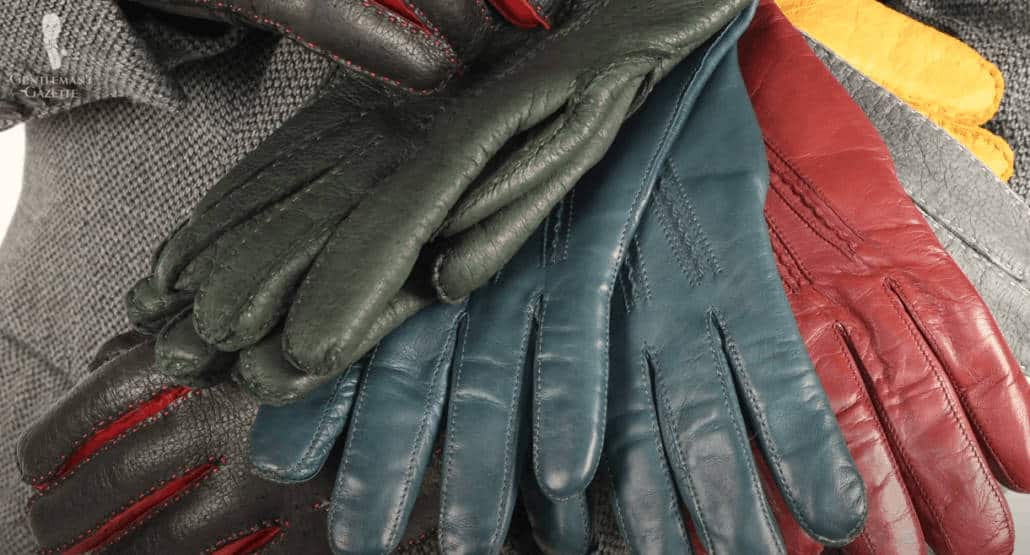
A popular one was gray, light gray, or dark gray. Another one was chamois yellow, which is a rich, nice yellow that contrasts with many items in your wardrobe. It’s really fun to compare the glove color to your scarves.

Because we offer a range of winter scarves and different colors, we also offer complementing glove colors in our shop. So, you don’t just have black and brown but also navy, sand, gray, different shades of brown, red, burgundy, orange, blue. We also have an olive green-mustard yellow combination or a kind of navy blue with lavender accents or a chestnut brown with some orange accents.
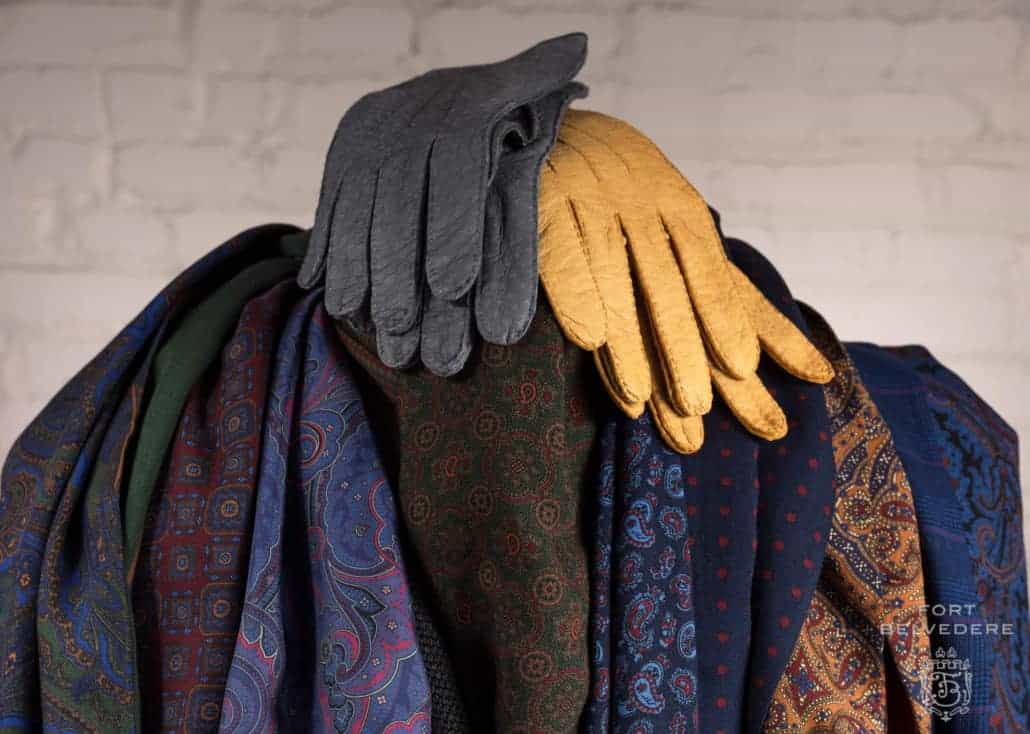
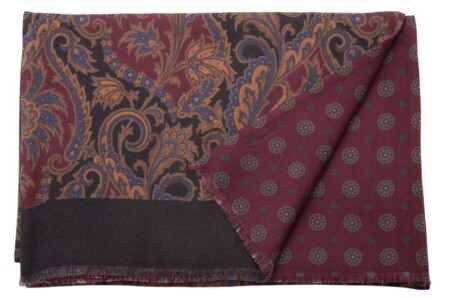
Fort Belvedere
Wool Silk Scarf in Black, Dark Red, Blue, Sunflower Yellow, Light Brown Paisley & Round Micropattern – Fort Belvedere
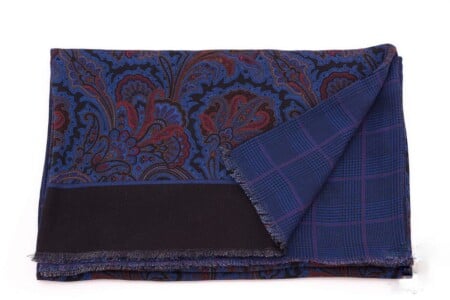
Fort Belvedere
Reversible Scarf in Royal Blue and Red Silk Wool Polka Paisley and Glen Check – Fort Belvedere
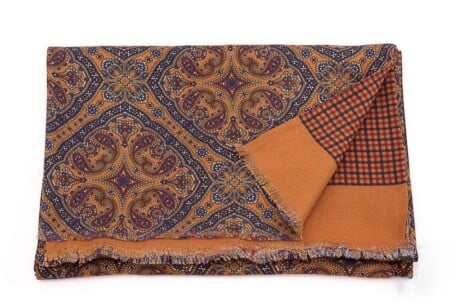
Fort Belvedere
Reversible Scarf in Burnt Orange, Red and Blue Silk Wool Pattern and Checks – Fort Belvedere
That being said, most gloves you buy these days have one uniform color. But, sometimes, a contrasting accent, for example, the piping or the button or the thread color, or maybe the quirks in between can really change the look and feel of gloves and provide great visual interest.
6. Points
When it comes to the points of gloves, many men have never paid attention to that. It’s basically the decorative stitching on the back of the hand. Traditionally, you see three. Some manufacturers have two, four, or sometimes five. Sometimes, you also have none or one. We’ve tried many different options but three just look the best.

We have them all marked by hand and then hand-stitched in a very unique pattern. It’s a subtle detail that a lot of people wouldn’t notice right away. But, you can really see it if you compare it next to other gloves that don’t have that fine detailing.
7. Treatment
Some leathers can also be treated to be more water-resistant than others, which can be a nice feature in the winter. But, more importantly, with the popularity of the smartphone these days, it’s nice sometimes to have a pair of gloves that you don’t have to take off to use your phone so a pair of touchscreen-sensitive gloves is definitely something you want in your rotation.
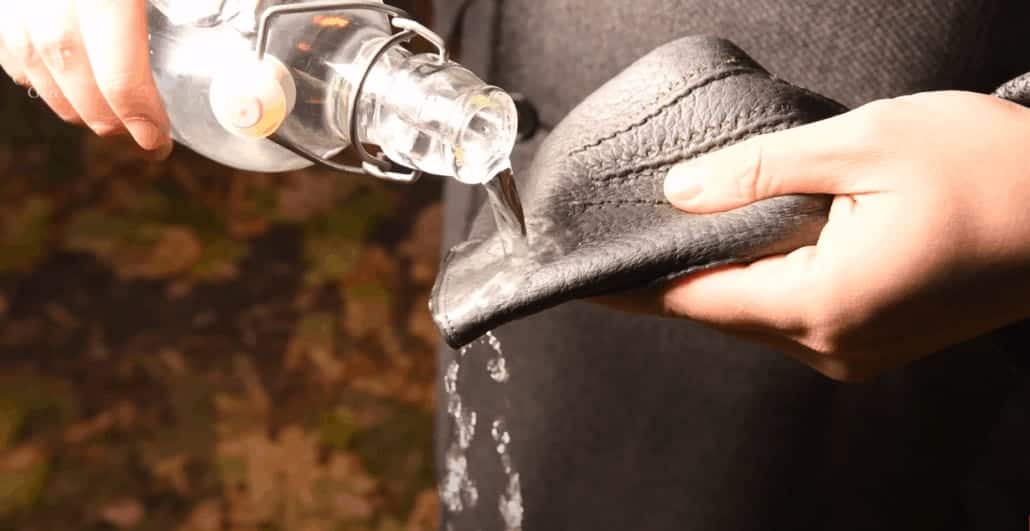
The problem with touchscreen-sensitive leather is that it’s typically a little stiffer and so it’s not quite as soft and supple as untreated leather. But, untreated leather won’t work on your touchscreen.
Because of that, I just have both in my wardrobe so, depending on what my needs are and where I’m going, I can utilize something that I like and is useful to me in any given situation.
When To Wear Each Type of Leather Glove
The most casual leather is probably suede or the most casual cut, it’s like a driving glove. For sport coat combinations or something that can be a little less casual, peccary is the king.
If you want a more formal glove that you wear with suits or to the office, lamb Nappa is really nice. For formal evening gloves, you also want lamb Nappa.
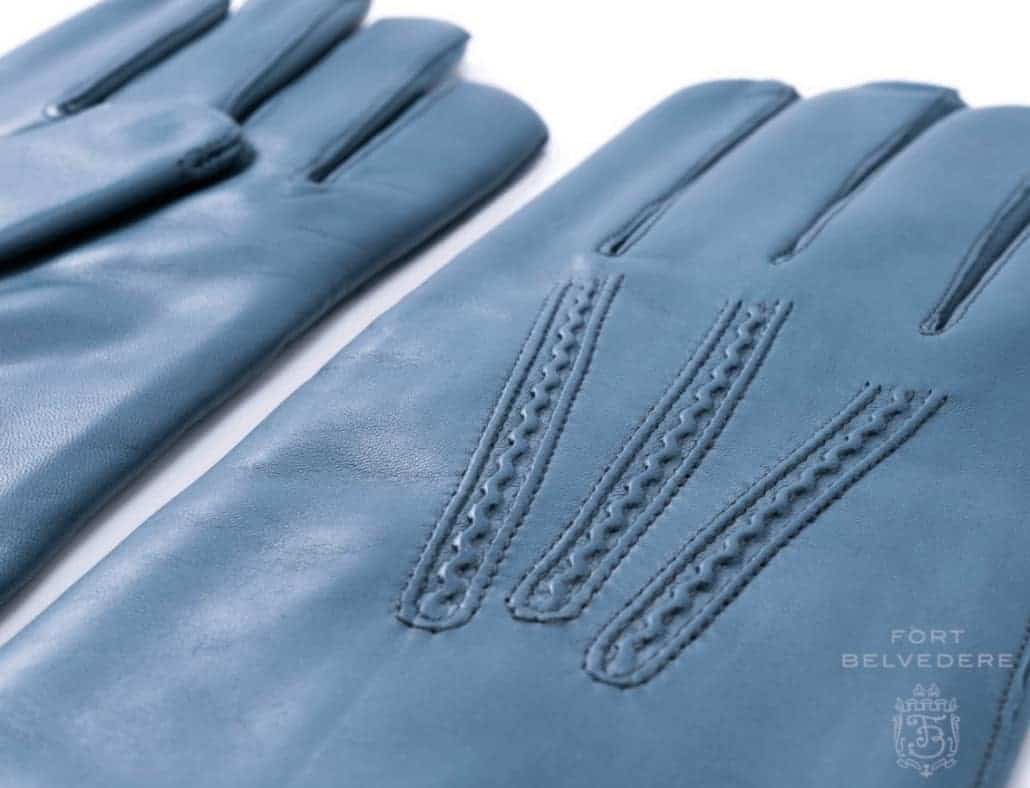
For cold weather use, you definitely want them lined but, keep in mind, they’re not skiing gloves. If you want something that keeps your hand really warm in the arctic, don’t wear dress gloves.
Conclusion
A great pair of gloves will serve you well if you choose them for the right functionality, and when and where you want to wear them.
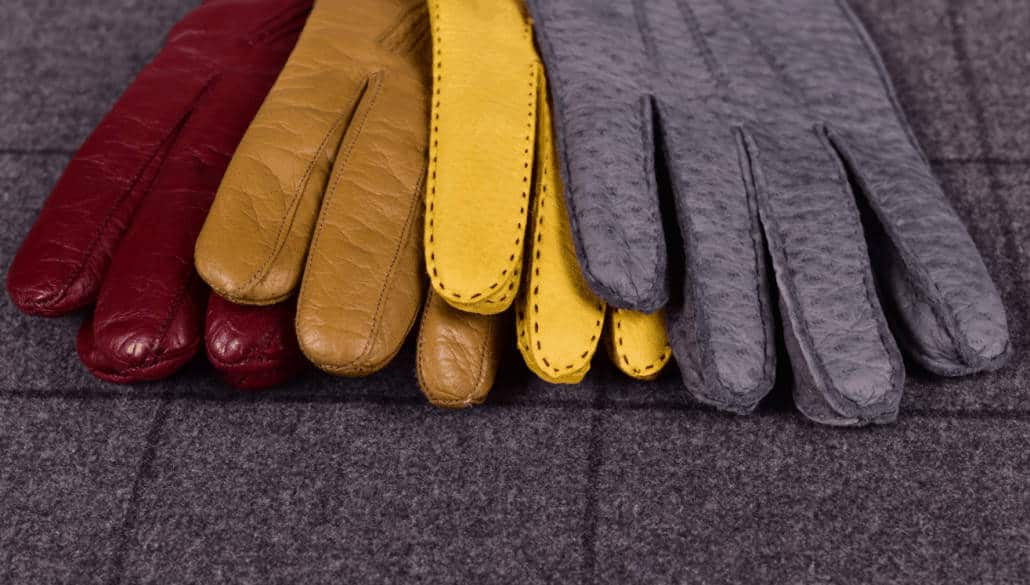
It is equally important to look at the material, construction, color, and style to give you the right form and function while also looking your best.
Outfit Rundown
In today’s outfit, I’m wearing a pair of yellow peccary gloves that are unlined. You can see they fit me really well. There’s no wrinkle. It’s very tight. I can move my fingers very easily. I have corks here in my fingers. I have these points in the back with contrast stitching and a contrasting button and piping as a little element of visual interest.
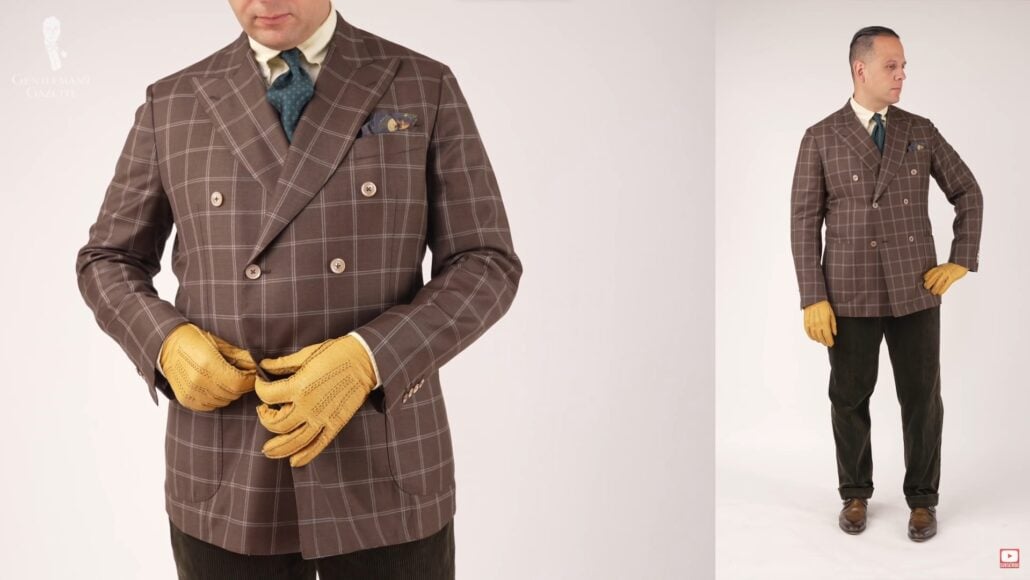
The peccary is just so marvelously soft and I once even forgot them outside. It fell out of my pocket in the winter. They were sitting in a puddle for several days. I came back. I picked them up. When I dried them, they were really hard but then as I wore them again they became softer and softer.
So, it’s truly something that is meant to last and you will likely be able to pass them on to your kids and grandkids, even though they may have to re-sew them. But, the leather itself won’t wear out.
I’m combining these gloves with a yellow linen shirt with a button-down collar and a madder silk tie in green with elements of blue and orange. The pocket square is a wool-silk blend with little rabbits on them and elements of green and yellow, so it ties the tie, the shirt, the gloves, and the entire outfit together. Both the tie and the pocket square are from Fort Belvedere. You can find them in our shop.
My jacket is from Isaia. It’s double-breasted and brown with a windowpane. It’s definitely more modern because as you can see it has patch pockets, which are more casual. But, traditionally, double-breasted jackets were more formal. My pair of pants are green corduroys from Polo Ralph Lauren.
I’m combining them with a pair of monk straps from Alton. They were hand patinaed so you can see the different shades of brown. The socks are green and brown, so they tie the shoes and the pants together and pick up the green color of the tie. They, like the rest, are from Fort Belvedere and you can find them in our shop.
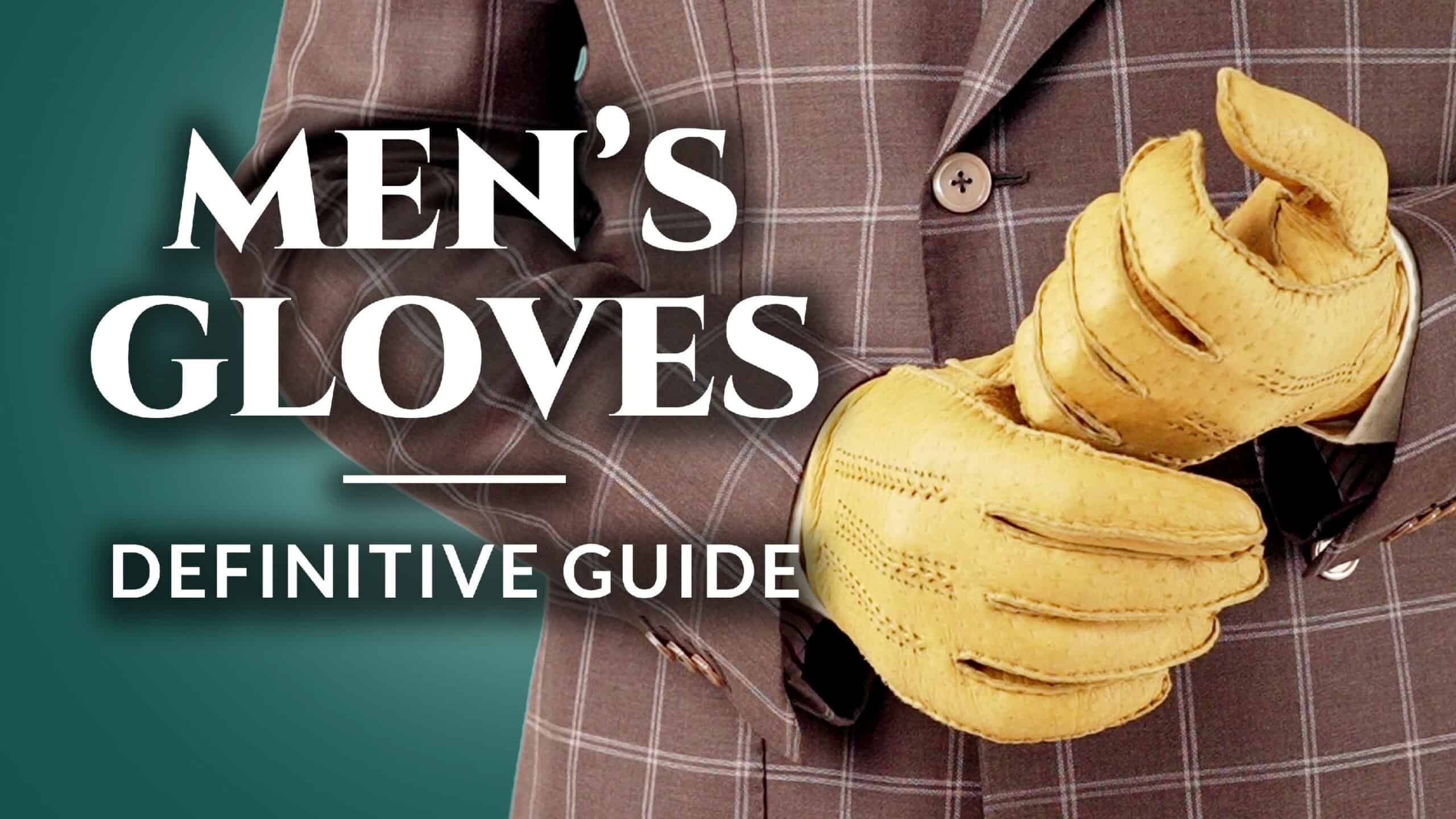


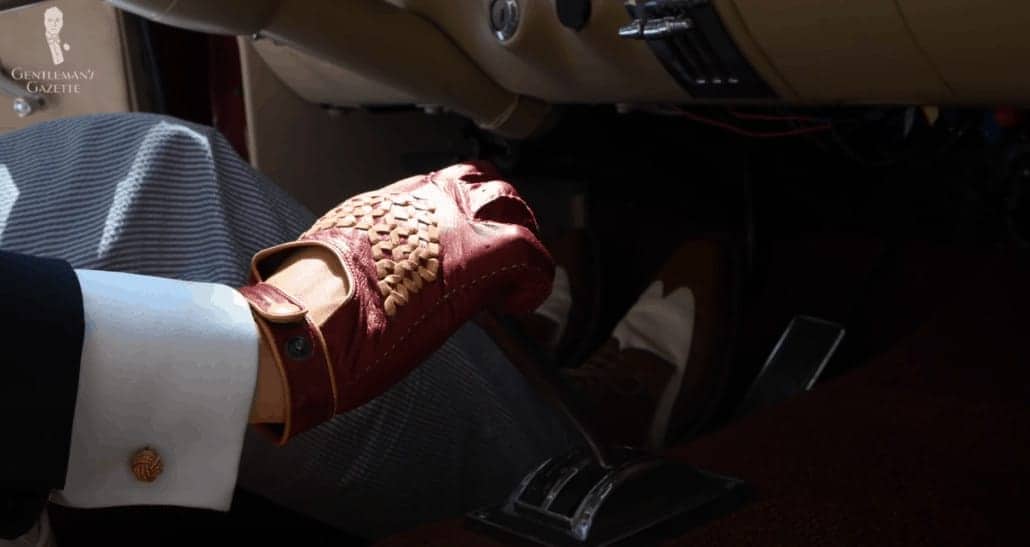

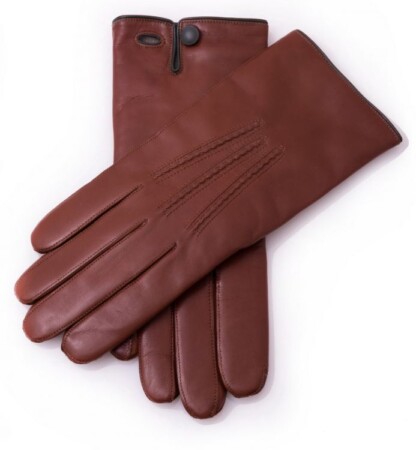
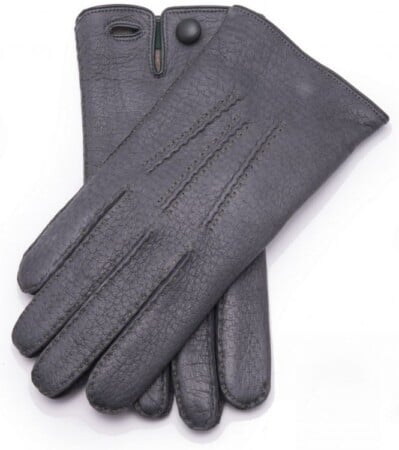
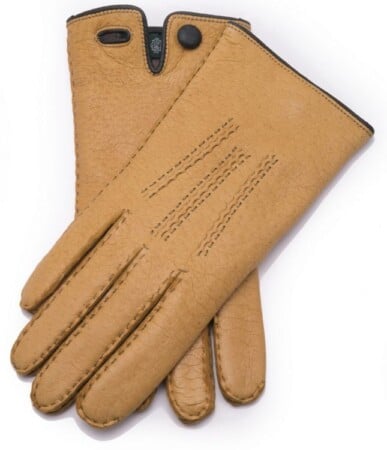
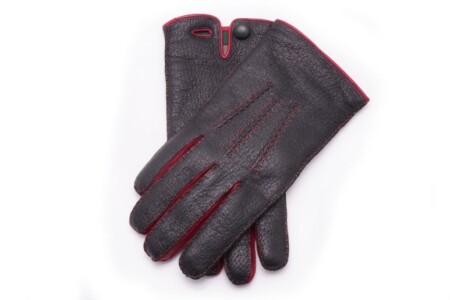
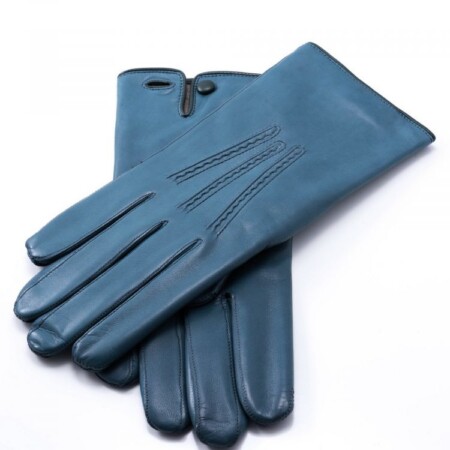
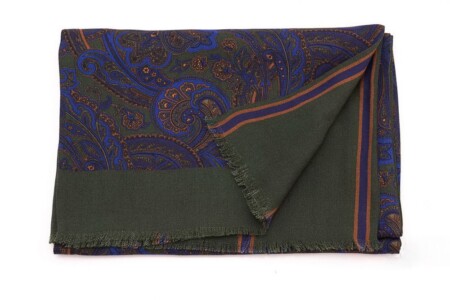
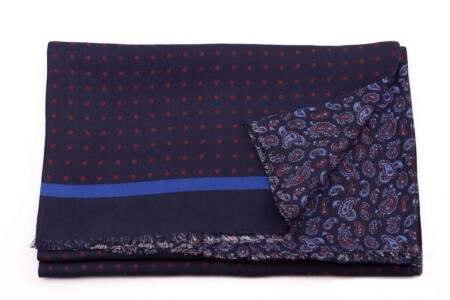
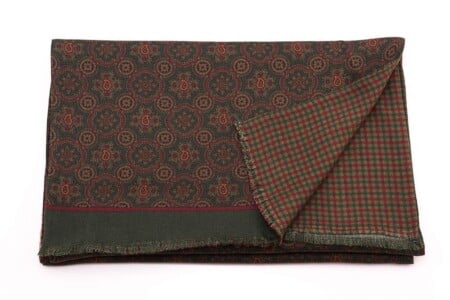
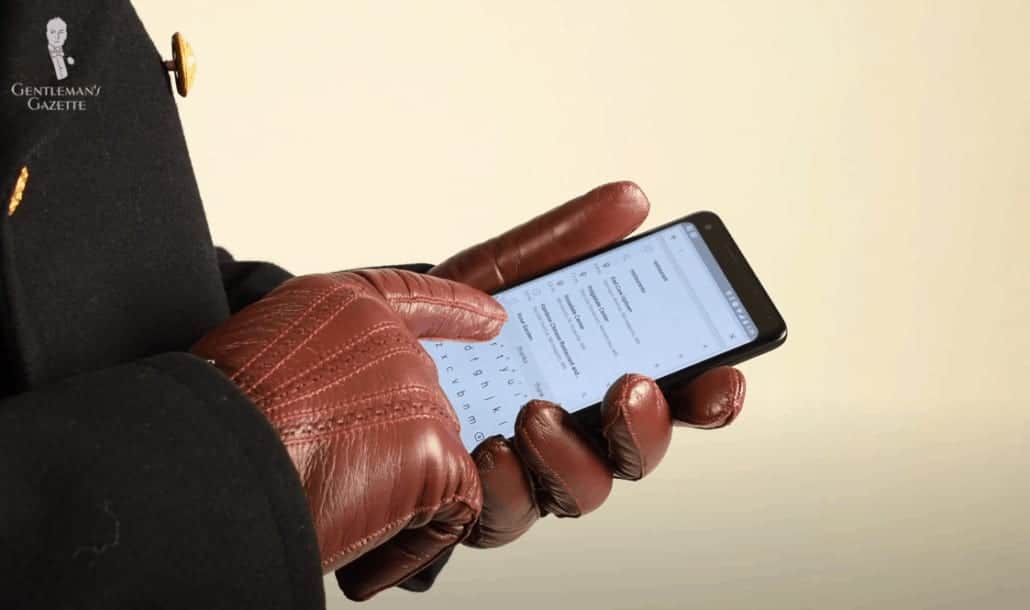


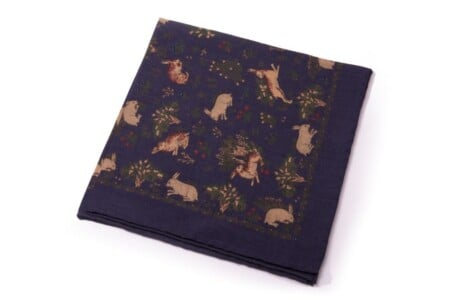
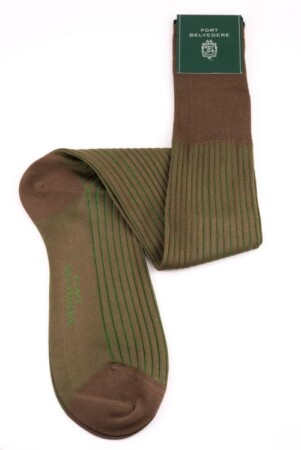
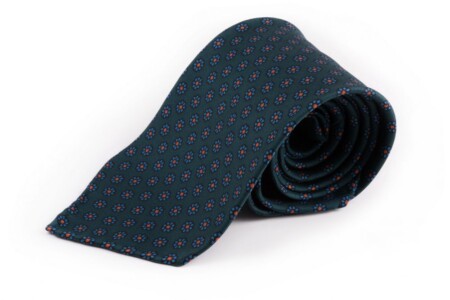
Excellent video just like your other video on gloves.
I bought a pair of unlined Peccary and a pair of cashmere lined Peccary gloves this past summer after watching your other video on gloves. I am looking forward to wear them in the Fall and Winter respectively.